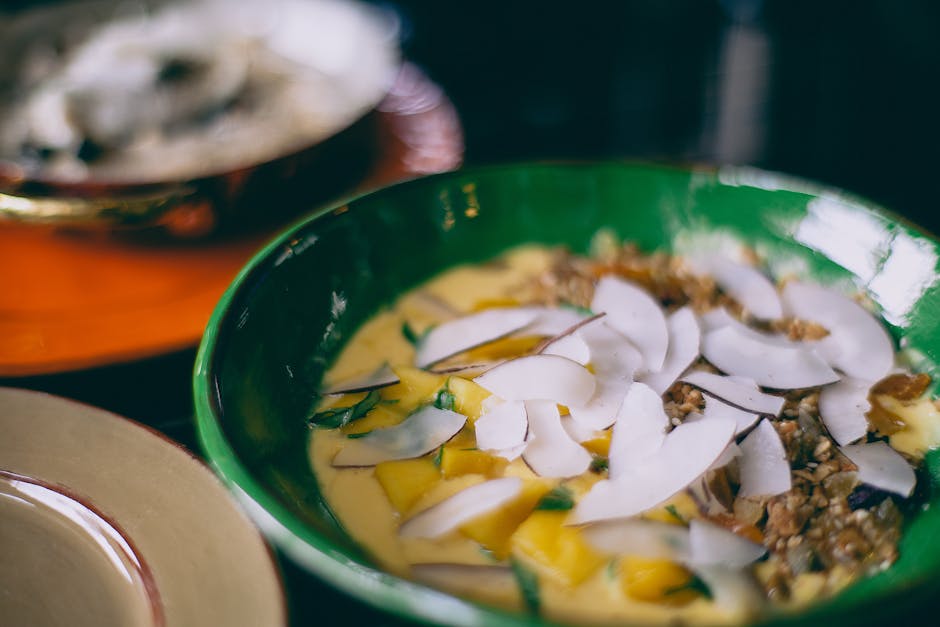The Best Almond Matcha Latte represents a delicious fusion of East and West, combining the ancient Japanese tradition of matcha with the contemporary popularity of plant-based milk alternatives. Matcha itself, a finely ground powder of specially grown and processed green tea leaves, boasts a history stretching back centuries. Its origins can be traced to China, where tea cultivation began, but it was in Japan, particularly during the Kamakura period (1185-1333), that matcha truly flourished. Zen Buddhist monks embraced matcha for its energizing properties and meditative qualities, incorporating it into their daily rituals. The meticulous cultivation and preparation methods, emphasizing shade-growing for enhanced chlorophyll content and a sweeter flavor, remain crucial to producing high-quality matcha today. This dedication to process resulted in matcha becoming deeply intertwined with Japanese tea ceremonies, a significant cultural practice rich in symbolism and etiquette.
The addition of almond milk to this classic beverage reflects a modern trend towards healthier and more sustainable food choices. Almond milk, a plant-based alternative to dairy milk, has experienced explosive growth in popularity in recent years. Globally, the plant-based milk market is booming, with almond milk consistently ranking among the top choices. Reports suggest that the global almond milk market size was valued at USD 7.5 billion in 2022 and is projected to reach USD 16.2 billion by 2030, a testament to its increasing appeal. This surge in popularity is driven by factors such as health consciousness (reduced saturated fat, lactose-free), environmental concerns (reduced carbon footprint compared to dairy farming), and ethical considerations related to animal welfare.
The combination of matcha and almond milk in our Best Almond Matcha Latte offers a unique sensory experience. The earthy, slightly bitter notes of matcha are beautifully complemented by the creamy, subtly sweet flavor of almond milk, creating a balanced and refreshing beverage. The vibrant green hue of matcha also adds a visually appealing element, enhancing the overall enjoyment. Furthermore, this latte offers a multitude of potential health benefits. Matcha is a rich source of antioxidants and contains L-theanine, an amino acid that promotes relaxation and focus. Almond milk provides essential vitamins and minerals, contributing to a nutritious and satisfying drink. Our Best Almond Matcha Latte is not just a delicious treat; it’s a mindful indulgence that combines ancient traditions with contemporary tastes, offering a harmonious blend of flavor, health, and cultural history.
Ingredients and Measurements
Crafting the perfect Best Almond Matcha Latte hinges on using high-quality ingredients and precise measurements. This recipe prioritizes both flavor and texture, guiding you towards a truly exceptional beverage. We’ll break down each component, offering substitutions where appropriate and highlighting key considerations for optimal results.
Matcha Powder (2 grams): This is the star of the show! We recommend using culinary-grade matcha, specifically a ceremonial or premium grade for the richest flavor and vibrant green hue. Avoid using lower-grade matcha intended for baking, as it often has a bitter taste. Two grams might seem like a small amount, but it delivers a potent and balanced flavor. You can use a small kitchen scale for precise measurement, ensuring consistency in every cup. If you don’t have a scale, a generously rounded teaspoon is approximately 1 gram, so use two rounded teaspoons.
Hot Water (2 ounces): This step is crucial for properly preparing the matcha. Using hot, but not boiling, water (around 175°F or 80°C) is essential. Boiling water will scorch the matcha, resulting in a bitter and unpleasant taste. Use a thermometer to ensure accuracy. Gradually pour the hot water over the matcha powder, whisking continuously to prevent lumps and ensure a smooth, homogenous mixture.
Almond Milk (8 ounces): Unsweetened almond milk is our preferred choice, as it provides a creamy texture without overpowering the delicate matcha flavor. However, you can experiment with other plant-based milks like oat milk or soy milk. Note that the sweetness and thickness of different milk alternatives will vary, so you might need to adjust the amount of sweetener accordingly. Cold almond milk is best to balance the temperature of the hot matcha mixture. Using warm or hot milk can thin out the latte.
Sweetener (to taste): The amount of sweetener depends entirely on your personal preference. We suggest starting with 1-2 teaspoons of your preferred sweetener and adjusting to your liking. Maple syrup, agave nectar, or a high-quality honey are excellent choices, complementing the matcha’s earthy notes. For a sugar-free option, consider using a sugar substitute like stevia or erythritol. Remember to add the sweetener after combining the matcha and almond milk.
Optional additions: To enhance your latte experience, consider adding a pinch of vanilla extract (1/4 teaspoon) for a subtle vanilla flavor, a dash of cinnamon (1/8 teaspoon) for a warm spice note, or a topping of unsweetened almond milk foam for an elegant presentation. Experiment with different flavor combinations to discover your perfect blend.
Important Note: Always measure your ingredients accurately for consistent results. Using a kitchen scale is highly recommended for the matcha powder to ensure you get the perfect balance of flavor. Enjoy your Best Almond Matcha Latte!
Equipment List: Crafting the Perfect Almond Matcha Latte
Creating the best almond matcha latte requires the right tools to ensure a smooth, flavorful, and visually appealing beverage. While some items might seem optional, investing in quality equipment will significantly enhance your latte-making experience and the overall quality of your drink. This detailed equipment list outlines everything you’ll need, from essential items to helpful additions.
1. Matcha Whisk (Chasen): A high-quality bamboo matcha whisk (chasen) is crucial for properly whisking the matcha powder into a smooth, froth-free paste. Avoid using a regular whisk; the chasen’s fine bristles are designed to prevent clumping and create the ideal texture. Look for a chasen with approximately 80-100 bristles for optimal performance. A well-maintained chasen will last for years with proper care (gentle washing and air drying).
2. Matcha Bowl (Chawan): A traditional matcha bowl (chawan) is ideal for whisking, as its wide, shallow base facilitates easy whisking and prevents splashing. While not strictly necessary, a chawan enhances the aesthetic experience. Choose a bowl made of ceramic or stoneware; avoid using metal bowls, as they can affect the flavor of the matcha.
3. Milk Frother: A milk frother is essential for creating the creamy texture characteristic of a latte. You have several options: a handheld electric frother, an automatic milk frother (often included with espresso machines), or even a French press for a more rustic approach. Handheld frothers are cost-effective and convenient for smaller batches, while automatic frothers offer greater consistency. If using a French press, ensure you gently froth the almond milk to avoid excessive bubbles.
4. Scale (Digital Kitchen Scale): Precision is key when making matcha lattes. A digital kitchen scale allows for accurate measurement of matcha powder (typically 1-2 grams per serving), ensuring consistent flavor and avoiding bitterness from using too much. Measuring by volume can lead to inconsistencies, especially with finely powdered matcha.
5. Kettle (Gooseneck Kettle): A gooseneck kettle provides precise pouring control, crucial for achieving the ideal water temperature (around 175°F or 80°C) for matcha preparation. The gooseneck spout allows for a slow, steady pour, minimizing splashing and ensuring even matcha distribution. While not essential, it significantly improves the whisking process.
6. Measuring Spoons and Cups: While a scale is preferred for matcha, having accurate measuring spoons and cups is essential for measuring other ingredients, such as almond milk (typically 6-8 ounces per serving) and sweeteners (adjust to taste). Use stainless steel measuring tools for durability and easy cleaning.
7. Mug or Glass: A heat-resistant mug or glass is needed to serve your finished almond matcha latte. Choose a size appropriate for your serving amount. Consider a clear glass to appreciate the beautiful color and texture of the latte.
8. Optional: Fine Mesh Sieve: A fine mesh sieve can be used to sift the matcha powder before whisking, removing any potential lumps and ensuring a smoother texture. This step isn’t strictly necessary if you’re using quality matcha and a proper whisk, but it can be helpful.
Instructions (Preparation Phase)
Before embarking on the creation of your exquisite Almond Matcha Latte, meticulous preparation is key to achieving the perfect balance of flavors and texture. This phase focuses on ensuring all ingredients are ready and measured accurately, setting the stage for a seamless brewing process.
Begin by gathering your ingredients. You will need: 1 cup (240ml) unsweetened almond milk (choose a high-quality brand for optimal flavor), 1 teaspoon (approximately 2 grams) of high-quality culinary grade matcha powder (ceremonial grade is preferred for its smoother taste and vibrant green hue), 1-2 tablespoons of sweetener (adjust to your preference – honey, maple syrup, or agave nectar are excellent choices), and 1/2 teaspoon of vanilla extract (optional, but highly recommended for enhancing the overall flavor profile).
Preparing the almond milk is crucial. If using refrigerated almond milk, allow it to come to room temperature. Cold almond milk can cause the matcha to clump and result in an unevenly distributed latte. Warming the almond milk slightly, to approximately 80-90°F (27-32°C), is ideal. You can achieve this by gently heating it in a saucepan over low heat, constantly stirring to prevent scorching. Alternatively, you can microwave it in short bursts, stirring in between, to avoid overheating.
Measure your matcha powder carefully. Using a gram scale is recommended for precise measurement, as using a teaspoon can result in inconsistent results. One teaspoon (approximately 2 grams) is a good starting point for a single serving, but this can be adjusted based on your preferred matcha intensity. Remember, you can always add more matcha, but you cannot remove it once it’s mixed.
Prepare your sweetener. Measure out your desired amount of sweetener. Start with 1 tablespoon and add more to taste. It’s easier to add more sweetness than to reduce it. Keep in mind that the natural sweetness of the almond milk might influence your choice. If using honey or maple syrup, ensure it is liquid at room temperature for easy mixing.
Choose your brewing method. There are several methods to prepare your matcha, each offering a slightly different texture and mouthfeel. You can use a matcha whisk (chasen) for a traditional frothy texture, a milk frother for a creamier latte, or even a blender for a smoother, more homogenous mixture. Select the method that best suits your preferences and available tools.
Organize your equipment. Before you begin mixing, ensure you have all your tools ready: your chosen brewing device (whisk, frother, or blender), a small bowl or cup for whisking the matcha, a mug for serving, and any necessary measuring spoons and cups. This organized approach will ensure a smooth and efficient brewing process, allowing you to focus on creating the perfect Almond Matcha Latte.
Finally, take a moment to appreciate the quality of your ingredients. The success of your latte depends on using high-quality matcha and almond milk. By prioritizing quality ingredients and precise measurements, you are setting the stage for an exceptional and truly delightful beverage.
Brewing the Matcha
Crafting the perfect matcha for your almond matcha latte is crucial for a balanced and delicious beverage. The quality of your matcha directly impacts the flavor profile, so investing in good quality ceremonial grade or culinary grade matcha is recommended. Avoid using lower-grade matcha intended for baking, as these often have a bitter taste that won’t complement the almond milk.
For this recipe, we’ll be using the traditional whisking method for optimal matcha preparation. This method ensures a smooth, creamy texture without lumps, releasing the full flavor and vibrant green color of the matcha powder. You will need a small bowl (ideally a matcha bowl), a bamboo whisk (a chasen), and a fine-mesh sieve.
Begin by sifting your matcha powder. This crucial step removes any clumps and ensures a consistent texture in your latte. Using a fine-mesh sieve, gently sift 1-2 teaspoons of matcha powder into your bowl. The amount depends on your preferred strength; 1 teaspoon provides a milder latte, while 2 teaspoons delivers a more intense matcha flavor. Adjust this amount to your liking.
Next, add your hot water. It’s essential to use water that’s just off the boil – around 175°F (80°C). Boiling water will scorch the matcha, resulting in a bitter and unpleasant taste. For this recipe, we recommend using 2-3 ounces (60-90ml) of hot water. Slowly add the hot water to the sifted matcha powder while whisking continuously with your chasen.
Whisking is an art form. Start by whisking in a ‘W’ or ‘M’ motion, ensuring you reach the bottom of the bowl to incorporate all the matcha powder. The goal is to create a smooth, frothy mixture, free from any lumps. This takes practice, so don’t be discouraged if your first attempts aren’t perfect. Continue whisking vigorously for about 20-30 seconds until the matcha is fully dissolved and a light, airy foam forms on the surface. The mixture should be a vibrant green color and free of any visible clumps of matcha powder.
If you don’t have a bamboo whisk, you can use a small milk frother, but the texture might not be as smooth and airy as with a chasen. In this case, use a lower speed to avoid excessive frothing. Ensure you whisk thoroughly to prevent any gritty texture in your final latte.
Once you’ve achieved a smooth matcha paste, you’re ready to combine it with your warmed almond milk. The prepared matcha can be added directly to the almond milk, or you can froth the almond milk separately and then gently stir in the matcha paste for a smoother, creamier texture. Experiment to find the method you prefer.
Remember, consistency is key. Practice makes perfect when it comes to whisking matcha. With a little patience and attention to detail, you’ll be able to master the art of matcha preparation and create a truly exceptional almond matcha latte.
Frothing the Milk (Cooking Technique)
Achieving the perfect velvety texture in your almond matcha latte hinges significantly on properly frothed milk. While many opt for a milk frother, you can achieve excellent results with simple tools you likely already have in your kitchen. This section details both methods, allowing you to choose the one that best suits your equipment and preferences.
Method 1: Using a Milk Frother (Recommended)
A handheld milk frother is the quickest and most efficient way to froth almond milk. Ensure your almond milk is cold for optimal results. Pour approximately 1/2 cup (120ml) of cold almond milk into a tall, narrow container – a glass or a stainless steel pitcher works best. Insert the frother and whisk vigorously for about 15-20 seconds, or until the milk is light and fluffy, with a noticeable increase in volume. Avoid over-frothing, which can result in a grainy or overly airy texture. The ideal consistency resembles a light, airy foam, not a stiff meringue.
Method 2: Using a Whisk and Pot (Alternative Method)
If you don’t own a milk frother, you can still create a decent foam using a whisk and a small saucepan. Pour 1/2 cup (120ml) of cold almond milk into the saucepan. Heat the milk over medium-low heat, constantly whisking. It’s crucial to avoid boiling the milk; the goal is to gently warm it while incorporating air. As the milk warms, you’ll notice it begin to thicken and create a foam. Continue whisking vigorously until a light, airy foam forms on top. This method will take slightly longer than using a milk frother but yields surprisingly good results. Be patient and persistent with your whisking.
Tips for Success:
Choosing the Right Almond Milk: Not all almond milks froth equally well. Unsweetened varieties generally produce the best results. Avoid almond milks that are heavily thickened or contain added gums, as these can hinder the frothing process. Experiment with different brands to find one that you prefer.
Temperature Control: Whether using a frother or a saucepan, avoid overheating the milk. Overheated milk can taste burnt and will not froth as effectively. Aim for a slightly warm temperature, just enough to create the foam.
Cleanliness: Clean your frother thoroughly after each use to prevent any build-up of milk residue, which can affect the frothing process in the future. If using a saucepan, wash it immediately after use to avoid milk sticking and burning.
Experimentation: The perfect froth is subjective. Don’t be afraid to experiment with the amount of milk and frothing time to achieve your desired consistency. Practice makes perfect! Once you master the technique, you’ll be able to create delicious, perfectly frothed almond matcha lattes every time.
Combining and Mixing
This section details the crucial step of combining and mixing your ingredients to create the perfect almond matcha latte. The process is simple, but precision in technique will significantly impact the final flavor and texture. Remember, the goal is a smooth, creamy, and vibrantly green beverage without any clumps of matcha powder.
Begin with the Matcha: Start by sifting 1-2 teaspoons of high-quality matcha powder into a small bowl. Sifting is essential. It removes any lumps and ensures a smooth, consistent texture in your latte. The amount of matcha you use depends on your preferred strength; 1 teaspoon provides a milder flavor, while 2 teaspoons delivers a more intense matcha experience. Adjust to your taste preference.
Adding the Liquid: Next, add 2-3 tablespoons of hot water (around 175-180°F or 80-82°C) to the sifted matcha powder. Do not use boiling water, as this can scorch the matcha and create a bitter taste. The ideal water temperature allows for the matcha to properly bloom and release its flavor without burning. Using a small whisk or a matcha whisk (chasen) vigorously whisk the mixture in a circular motion until a smooth paste forms, ensuring no lumps remain. This paste is called a matcha slurry. This step is crucial for preventing clumps in your final drink.
Incorporating Almond Milk: Once you have a smooth matcha slurry, it’s time to add your almond milk. Heat approximately 8 ounces (240ml) of unsweetened almond milk in a saucepan or microwave until it’s warm but not boiling. The warmth will help to further combine the ingredients and enhance the overall flavor. Gradually pour the warm almond milk into the matcha slurry, continuously whisking to prevent clumping. Gentle, consistent whisking is key to maintaining a smooth, creamy texture. If using a frother, you can froth the almond milk separately before adding it to the matcha slurry for a richer, more textured latte.
Sweetener (Optional): At this stage, add any sweetener of your choice, if desired. A touch of honey, maple syrup, or agave nectar can complement the earthy matcha flavor. Start with a small amount (1-2 teaspoons) and adjust to your liking. Stir gently until the sweetener is fully dissolved. Remember that the sweetness of the almond milk may vary depending on the brand, so adjust accordingly.
Final Touches: Once all ingredients are well combined, pour your almond matcha latte into your favorite mug. You can garnish it with a sprinkle of extra matcha powder, a dusting of cinnamon, or a sprig of fresh mint for an elegant touch. Enjoy your perfectly crafted Best Almond Matcha Latte immediately for the best flavor and texture.
Professional Recommendation: Invest in a good quality matcha whisk (chasen) for the best results. The traditional whisk is designed specifically for creating a smooth matcha paste without lumps. Experiment with different types of almond milk to find your preferred flavor and texture. Some almond milks are creamier than others, affecting the overall consistency of your latte.
Best Almond Matcha Latte: Recommendations
Our Best Almond Matcha Latte is a delightful blend of creamy almond milk, vibrant matcha powder, and a touch of sweetness. To ensure you enjoy it at its best, we offer the following recommendations:
Serving Suggestions: For the ultimate experience, we recommend serving your Best Almond Matcha Latte slightly chilled or at room temperature. Avoid heating it excessively, as this can diminish the delicate flavors of the matcha. A perfectly frothed almond milk creates a luxurious texture; consider using a milk frother for an extra touch of elegance. Alternatively, you can gently whisk the matcha powder into the almond milk until smooth to achieve a more traditional presentation. Experiment with adding a sprinkle of cinnamon or a dash of vanilla extract for unique flavor variations.
Storage Conditions: For optimal freshness, store your Best Almond Matcha Latte in an airtight container in the refrigerator at a temperature between 35°F and 40°F (2°C and 4°C). Do not freeze the latte, as this can alter its texture and taste. Consume within 3 days of preparation for the best flavor and quality. If you are making the latte ahead of time, prepare the almond milk and matcha separately, and combine just before serving to avoid separation and ensure the best quality.
Complementary Dishes: The subtly sweet and earthy notes of our Best Almond Matcha Latte pair perfectly with a variety of light and refreshing dishes. It complements delicate pastries such as almond croissants or matcha-infused cookies beautifully. It also works well with breakfast foods like yogurt parfaits featuring granola and berries, or alongside light brunch options like avocado toast or fruit salads. For a more substantial pairing, consider enjoying it with a light and savory dish such as a vegetable quiche or a Japanese-inspired bento box. The subtle bitterness of the matcha cuts through the richness of many foods, creating a balanced and satisfying culinary experience.
Nutritional Information (per 8 oz serving): Please note that these values are approximate and may vary slightly depending on the specific ingredients used.
Calories: Approximately 150-180 calories
Fat: 8-12g (mostly unsaturated)
Saturated Fat: 1-2g
Carbohydrates: 15-20g
Sugar: 5-10g (naturally occurring and/or added)
Protein: 2-4g
Important Note: Our Best Almond Matcha Latte contains caffeine. Please consume responsibly and be mindful of your individual caffeine tolerance. Individuals with allergies to almonds or matcha should avoid consuming this product. Always check the ingredient list for any potential allergens before consumption. The nutritional information provided is based on a standard recipe and may vary depending on ingredient substitutions or adjustments to the recipe.





